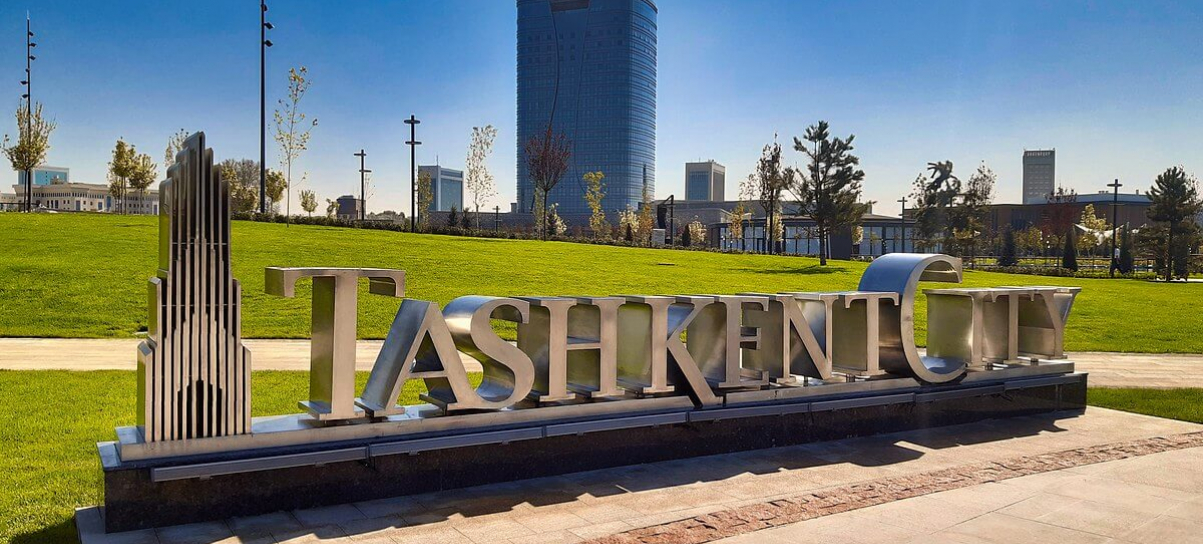Modern capital Tashkent
This modern capital with wide avenues and shady squares in the heart of Asia, has a long history of 2200 years.
The Chach principality of Sogdiana was once a boundary between the nomadic tribes of the Steppe and the settled farmers of the Oasis. It has always been the border town and the place of exchange, where the nomads would exchange the products of cattle and horse breeding to grains and other crops.
The first records about Tashkent were made by Chinese historians and pilgrims who travelled to the west, searching for genuine scripts about life of Buddha. City was mentioned as Chi or Yueni.
For nearly eight centuries Tashkent enjoyed the profits of intensive trade on the Great Silk Road, being one of the important points. Caravans stopped here for taking their rest after hazardous journey across the deserts and mountains of Gobi and Taklamakan.
In 705 AD, the ruthless Arab commander Kutaiba conquered the city and forcibly converted the local Zoroastrian population into Islam. Chach became Madinat al Shash and became one of the cities of Arab Khalifat.
There followed a period when Tashkent was a seat of ruling dynasties of Samanids and Karakhanids. Karakhanids granted the city with new name which stood – Tashkent, meaning the stone city.
Mongols arrived to Tashkent in 1220 only to find out that retreating army of Khorezmshah left it in ruins.
City recovered quickly during the rule of Timurids, when it regained the fame of city of trade.
In the 16th century Tashkent was known as one of the capitals of Shaybanids.
 |
The existing historical monuments of Tashkent were erected by Barakhan – their famous representative. Durind the rule of Barakhan Tashkent had a reputation of a city of learned.
There followed the period of Dark Ages which lasted for nearly 3 centuries. Many times Tashkent was sacked by nomadic Kazachs, Jungars and Kalmyks.
Finally in 1865 the Russian General Chernyaev after breaking the defensive lines of troops of Khan of Kokand, took over the city and established Russian supremacy.
Tashkent became the capital of Turkestan General Governorship.
New Russian Tashkent grew up to the south east from old Uzbek Tashkent. The new city acquired the radial layout of St. Petersburg. Very soon were laid new lanes with tramlines, new parks were planted, cinema houses, hotels, officers club built and Tashkent got the features of European city. It was the time of rapid growth in economy and industry, when new factories, cotton and oil refineries were built, banks opened, irrigation canals were dug.
With the construction of the Tran Caspian Railroad thin process speeded up.
In 1918 the Bolshevik revolution in Russia echoed in Tashkent. The local socialists declared Tashkent the capital of Turkestan People’s Republic. In 1930 Tashkent was capital of newly created Uzbek Soviet Socialist Republic. Soon, big famine in Volga region and Ukraine drove the people to relatively prosperous Uzbekistan and Tashkent. This was the time when Tashkent became known as City of Bread.
The second World War forced the Soviet Government to evacuate strategic industries, factories and plants, research institutes and academies and people from war zones to Tashkent. Refugees, orphans, women and children were welcomed by hospitable Uzbek people. many of the refugees remained in Tashkent after the war.
In 1966 disastrous earthquake woke the people of Tashkent. As a result of it 300000 people left homeless. The help came very quickly.
 |
All 15 republics of Soviet Union supported Uzbekistan. They started sending their best constructors and architects and construction materials to Uzbekistan. Within 3.5 years the capital of Uzbekistan was rebuilt and the population nearly doubled.
1991 following the coup de tat in Moscow, Supreme Council in Uzbekistan declared independence and Tashkent became the capital of Independent Uzbekistan.
Tashkent Hotels
Tashkent Sightseeings
We recommend to see more:
Follow us on
Sign up for our newsletters
Find our latest discounted tours, updated itineraries and latest news about the region



